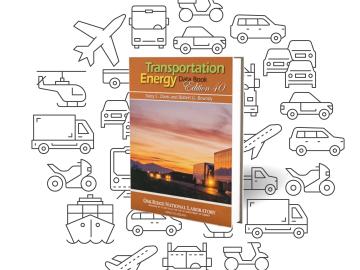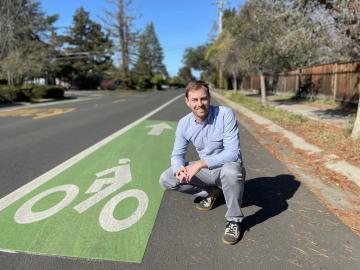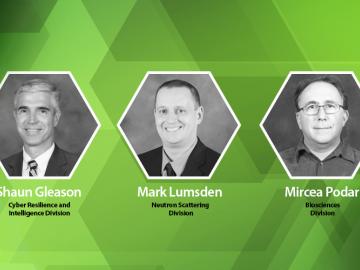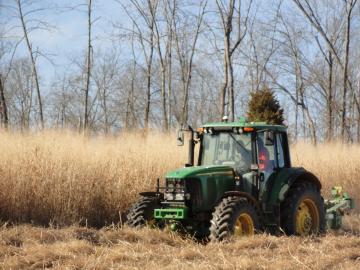
Filter News
Area of Research
- (-) Energy Science (137)
- (-) Neutron Science (35)
- Advanced Manufacturing (4)
- Biological Systems (1)
- Biology and Environment (112)
- Biology and Soft Matter (1)
- Computational Biology (2)
- Computational Engineering (3)
- Computer Science (6)
- Electricity and Smart Grid (1)
- Functional Materials for Energy (1)
- Fusion and Fission (27)
- Fusion Energy (15)
- Isotope Development and Production (1)
- Isotopes (28)
- Materials (58)
- Materials for Computing (9)
- Mathematics (1)
- National Security (41)
- Nuclear Science and Technology (18)
- Quantum information Science (2)
- Sensors and Controls (1)
- Supercomputing (66)
- Transportation Systems (2)
News Topics
- (-) Biomedical (20)
- (-) Cybersecurity (9)
- (-) Environment (59)
- (-) Fusion (2)
- (-) Isotopes (1)
- (-) Machine Learning (10)
- (-) Security (8)
- (-) Space Exploration (6)
- (-) Transportation (68)
- 3-D Printing/Advanced Manufacturing (83)
- Advanced Reactors (6)
- Artificial Intelligence (14)
- Big Data (7)
- Bioenergy (31)
- Biology (18)
- Biotechnology (5)
- Buildings (38)
- Chemical Sciences (17)
- Clean Water (10)
- Composites (18)
- Computer Science (35)
- Coronavirus (22)
- Critical Materials (9)
- Energy Storage (74)
- Exascale Computing (2)
- Fossil Energy (3)
- Frontier (3)
- Grid (39)
- High-Performance Computing (8)
- Hydropower (3)
- Materials (46)
- Materials Science (48)
- Mathematics (3)
- Mercury (3)
- Microelectronics (1)
- Microscopy (10)
- Molten Salt (1)
- Nanotechnology (17)
- National Security (7)
- Neutron Science (121)
- Nuclear Energy (9)
- Partnerships (12)
- Physics (10)
- Polymers (12)
- Quantum Computing (1)
- Quantum Science (8)
- Simulation (4)
- Statistics (1)
- Summit (9)
Media Contacts

ORNL scientists will present new technologies available for licensing during the annual Technology Innovation Showcase. The event is 9 a.m. to 3 p.m. Thursday, June 16, at the Manufacturing Demonstration Facility at ORNL’s Hardin Valley campus.

What’s getting Jim Szybist fired up these days? It’s the opportunity to apply his years of alternative fuel combustion and thermodynamics research to the challenge of cleaning up the hard-to-decarbonize, heavy-duty mobility sector — from airplanes to locomotives to ships and massive farm combines.

It’s been referenced in Popular Science and Newsweek, cited in the Economic Report of the President, and used by agencies to create countless federal regulations.

Oak Ridge National Laboratory researchers determined that for every 5 miles per hour that drivers travel over a 50-mph speed limit, fuel economy decreases by 7% and equates to paying an extra 28 cents per gallon at current.

David McCollum is using his interdisciplinary expertise, international networks and boundless enthusiasm to lead Oak Ridge National Laboratory’s contributions to the Net Zero World initiative.

ORNL and the Tennessee Valley Authority, or TVA, are joining forces to advance decarbonization technologies from discovery through deployment through a new memorandum of understanding, or MOU.

More than 50 current employees and recent retirees from ORNL received Department of Energy Secretary’s Honor Awards from Secretary Jennifer Granholm in January as part of project teams spanning the national laboratory system. The annual awards recognized 21 teams and three individuals for service and contributions to DOE’s mission and to the benefit of the nation.

Three ORNL scientists have been elected fellows of the American Association for the Advancement of Science, or AAAS, the world’s largest general scientific society and publisher of the Science family of journals.

Energy and sustainability experts from ORNL, industry, universities and the federal government recently identified key focus areas to meet the challenge of successfully decarbonizing the agriculture sector

Burak Ozpineci started out at ORNL working on a novel project: introducing silicon carbide into power electronics for more efficient electric vehicles. Twenty years later, the car he drives contains those same components.


